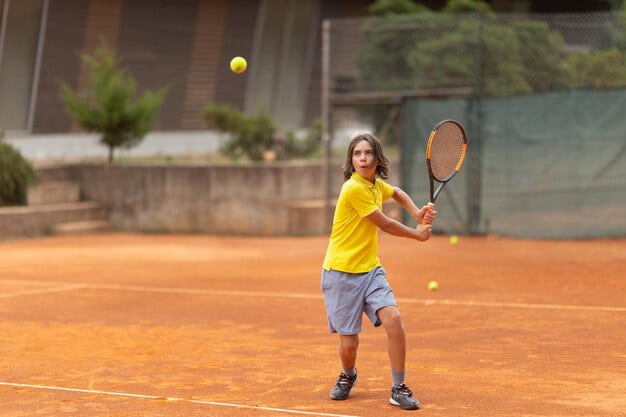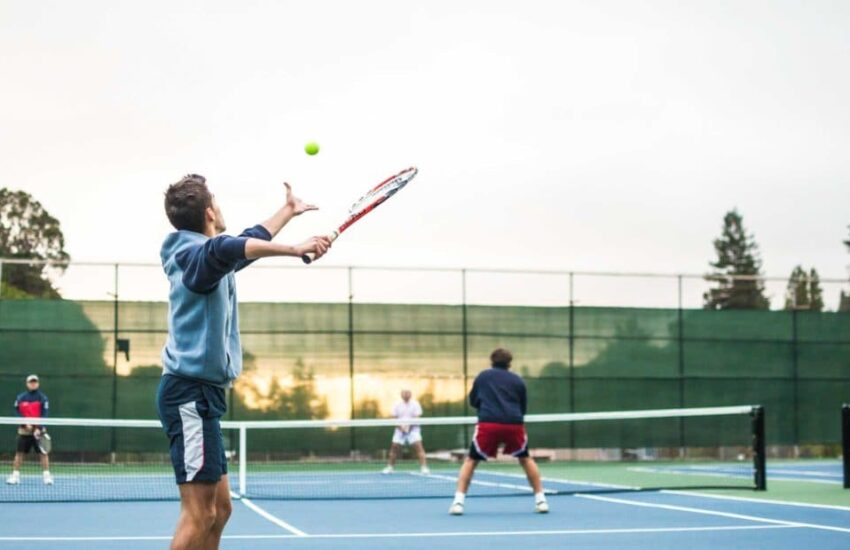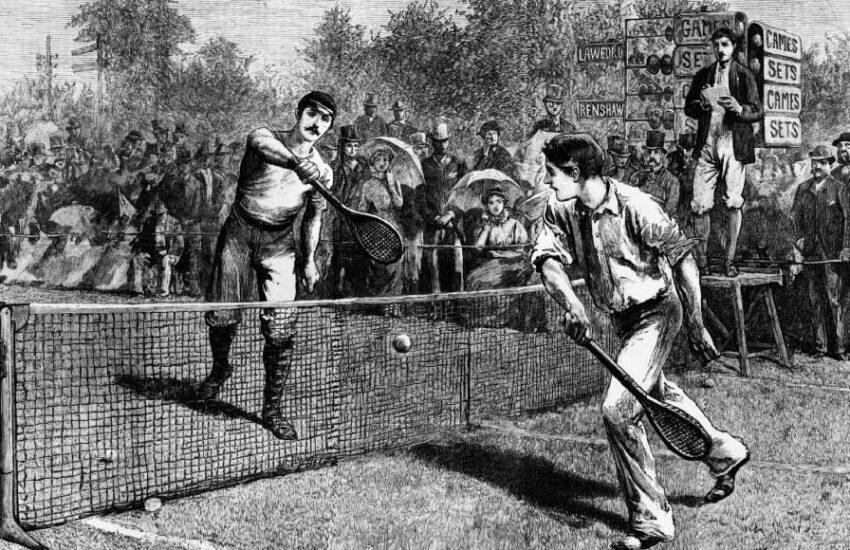Understanding the Volley in Tennis
The Origins of Tennis: Who Invented the Sport? In tennis, a volley is a technique where the player hits the ball before it bounces on the court. Typically executed near the net, the volley is a strategic move designed to catch the opponent off guard, allowing minimal time for response. This tactic can swiftly end a point or disrupt the opponent’s rhythm. The volley is integral to tennis and is employed in both singles and doubles matches. It demands quick reflexes, precise timing, and a good understanding of the game’s dynamics.
The Dynamics of the Forehand Volley
The forehand volley is performed on the same side as the player’s racket-holding hand. For a right-handed player, this would be the right side. It involves hitting the ball before it touches the ground and is typically executed close to the net. The aim is to return the ball swiftly to the opponent, limiting their response time.
Mastering the Backhand Volley
Contrasting the forehand volley, the backhand volley is executed on the side opposite the racket-holding hand. This requires hitting the ball from the left side for a right-handed player. The backhand volley, like its forehand counterpart, is performed before the ball bounces and is used to quickly return the ball, reducing the opponent’s time to react.
The Importance of Body Posture in Volleying
Effective volleying in tennis is heavily reliant on proper body posture. Players need to maintain a balanced stance with feet shoulder-width apart and knees slightly bent. This position allows for quick and agile movements, essential for a successful volley. The body’s weight should be on the balls of the feet, ready to move swiftly in any required direction.
Essential Tips for Improving Volleying Skills
Improving volleying skills in tennis involves a combination of practice and understanding the shot’s mechanics. Key areas to focus on include developing quick footwork, minimizing backswing, and performing regular volley drills. These exercises enhance reflexes, control, and precision, making the volley a more effective tool in your tennis arsenal.
The Tactical Advantage of Volleying in Tennis
Employing volleys in tennis provides a tactical edge by reducing the opponent’s reaction time and introducing an element of surprise. This strategy can be particularly effective in disrupting the opponent’s play and gaining control of the match. However, mastering this skill requires practice and a good grasp of its techniques and timing.
Key Elements of Successful Volleying
- Footwork: Quick and agile movement is essential;
- Grip: Use the continental grip for better control;
- Body Posture: Maintain a balanced and ready stance;
- Contact Point: Hit the ball in front of the body for optimal control;
- Backswing: Keep it minimal for quick reaction;
- Strategy: Use volleys to catch opponents off guard.
Comparative Table: Forehand vs. Backhand Volley
| Aspect | Forehand Volley | Backhand Volley |
|---|---|---|
| Side | Same as racket-holding hand | Opposite of racket-holding hand |
| Common Grip | Continental | Continental |
| Typical Use | Quick returns, offensive plays | Defensive plays, covering the court |
| Difficulty | Easier to master | Requires more practice for precision |
| Strategy | Aggressive play, quick points | Tactical play, covering weak spots |
Playing Pickleball on a Tennis Court: A Feasible Crossover
With the increasing popularity of pickleball, a common question arises: can it be played on a tennis court? The answer is yes, with some adjustments. Pickleball, a sport combining elements of tennis, badminton, and ping-pong, is typically played on a smaller court. However, a standard tennis court can be modified to accommodate pickleball play. This involves adjusting the net height and court markings. Playing pickleball on a tennis court allows for more versatile use of the facility and provides tennis players with an opportunity to engage in a different racket sport. The crossover between these sports is an excellent way for players to diversify their skills and enjoy a new form of recreation.
Conclusion
Incorporating effective volleys into your tennis gameplay can significantly elevate your performance. Whether executing a forehand or backhand volley, the key lies in precision, timing, and strategic use of the shot. With consistent practice and a focus on the fundamentals, volleying can become a formidable part of your tennis skill set, enabling you to outmaneuver opponents and dominate the court.
The origins of tennis trace back to 12th-century France, where the game was initially played with the palm and called “jeu de paume.” It wasn’t until the late 19th century that the modern version of tennis, as we know it, began to take shape. The sport owes much of its development to Major Walter Clopton Wingfield, who patented a game called “Sphairistike” in 1874. This game laid the foundation for modern lawn tennis, with its equipment and rules forming the basis of the contemporary sport. Wingfield’s contributions significantly shaped tennis, turning it from a medieval pastime into a structured, global sport.



